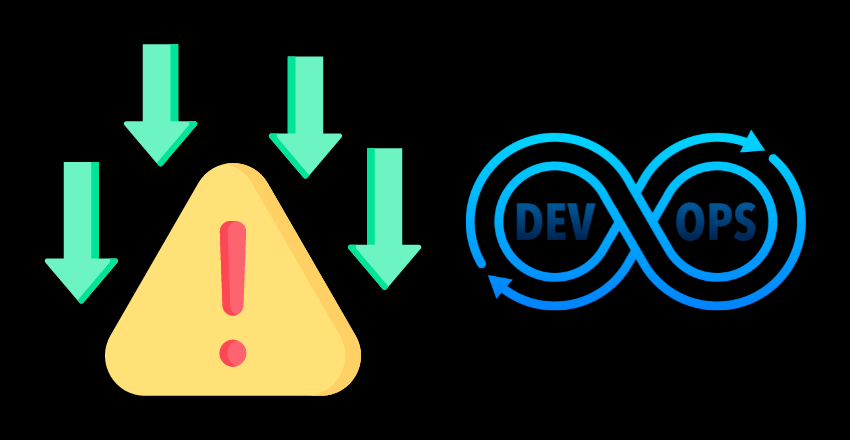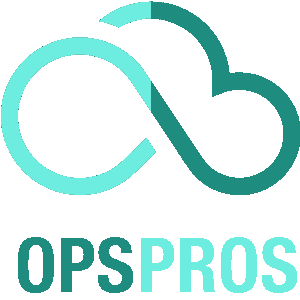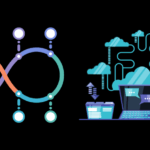
Anchor DevOps (A-DevOps) elevates your software lifecycle. Seamlessly integrate development and operations for faster deployments, reduced errors, and peak performance.
As software development continues to evolve, the importance of streamlining the development process becomes more apparent. This is where A-DevOps comes in, providing organizations with a framework that tightly integrates development and operations. A-DevOps can help streamline the software pipeline, reduce errors, enhance productivity, and foster collaboration.
Key Takeaways
- Anchor DevOps helps organizations streamline their development process.
- Implementing Anchor DevOps results in reduced errors and increased productivity.
- Fostering collaboration is a key aspect of Anchor DevOps.
Understanding Foundational DevOps Principles
DevOps is founded on several principles that are essential for a successful implementation. By understanding these principles, organizations can streamline their software pipeline and improve collaboration between development and operations teams.
Continuous Integration
Continuous integration refers to the practice of merging code changes from multiple developers into a single codebase frequently. It allows teams to detect and fix issues earlier in the development process, improving software quality and reducing the risk of errors. Continuous integration is a crucial principle in DevOps as it ensures that all changes are tested and validated before they are merged into the main code repository.
Continuous Delivery
Continuous delivery involves automating the release process, allowing teams to release changes to production quickly and efficiently. By using continuous delivery, teams can reduce the time between code changes and customer feedback, improving software delivery and customer satisfaction.
Continuous delivery also enables teams to roll back changes quickly if issues are detected, reducing technical debt and minimizing the risk of errors.
Infrastructure as Code
Infrastructure as code refers to the practice of managing infrastructure as software code. By treating infrastructure as code, teams can automate the provisioning, configuration, and deployment of infrastructure resources. Infrastructure as code allows teams to create consistent, repeatable environments, reducing manual errors and ensuring that configuration changes are versioned and auditable. This principle is essential for scaling applications and managing complex infrastructure.
DevOps Implementation
Successful implementation of DevOps requires a combination of technical and cultural changes. Teams must embrace automation, collaboration, and communication, enabling them to iterate quickly and respond to changing customer needs. To implement DevOps effectively, organizations must prioritize the foundational principles of continuous integration, continuous delivery, and infrastructure as code. By doing so, they can create a culture of innovation and continuous improvement, enabling them to stay ahead of the competition and deliver value to their customers.
Establishing DevOps in Your Organization
Establishing DevOps in your organization requires a shift in culture, mindset, and process. It’s not just about adopting new tools or technologies, but also about creating a collaborative and cross-functional work environment. With the right strategies and approach, you can establish DevOps in your organization and create a streamlined software pipeline that fosters collaboration and productivity.
Here are some practical tips for establishing DevOps:
- Start with a pilot project: Choose a small project to implement DevOps principles and practices. This will allow you to test and refine your approach before scaling up to larger projects.
- Encourage collaboration: Establish a culture of collaboration between development and operations teams. Encourage communication, knowledge sharing, and cross-functional training.
- Automate where possible: Use automation tools to streamline the software pipeline and eliminate manual tasks. This will help reduce errors and increase efficiency.
- Continuously monitor and improve: Monitor metrics and feedback loops to continuously improve the development process. Use data to identify bottlenecks, inefficiencies, and areas for optimization.
By following these tips, you can establish DevOps in your organization and create a software pipeline that promotes collaboration, enhances productivity, and delivers high-quality software products.
Key Considerations for Choosing an Anchor DevOps Solution
Choosing the right A-DevOps solution is crucial for streamlining your software pipeline and enhancing productivity. Here are key considerations to keep in mind when selecting an A-DevOps solution:
- Scalability: Ensure that the solution can handle the size and complexity of your development process.
- Integration capabilities: Look for a solution that integrates with your existing tools and systems.
- Community support: Consider the level of support and resources available from the solution’s community.
- Cost: Evaluate the cost of the solution in relation to its features and benefits.
- Customization: Determine the level of customization that the solution allows to fit your unique needs.
- Security: Ensure that the solution meets your organization’s security requirements.
By considering these factors, you can make an informed decision and choose an A-DevOps solution that will effectively streamline your software pipeline and improve collaboration among your development and operations teams.
Enhancing Productivity with Anchor DevOps

Incorporating A-DevOpss into your development process can significantly enhance productivity. A-DevOps streamlines the software pipeline, allowing for quicker and more efficient coding, testing, and deployment.
With A-DevOps, tasks such as code reviews, testing, and deployment can be automated, freeing up valuable time for developers to focus on more complex tasks. This automation also reduces the risk of errors and ensures consistency throughout the development process.
A-DevOps also allows for greater collaboration among development and operations teams. By streamlining the development process, A-DevOps allows for greater communication and collaboration, resulting in faster delivery of high-quality software.
Feature Showcase: Automated Testing
One of the most powerful features of A-DevOps is its ability to automate testing. With A-DevOps, developers can set up automated testing routines that run automatically whenever code changes are made. This ensures that any potential issues or bugs are caught early in the development process, reducing the time and effort required for debugging and fixing issues.
Automated testing also allows developers to spend more time on developing new features and functionality, rather than manually testing existing code. This not only enhances productivity but also results in higher quality software.
Reducing Errors with Anchor DevOps

Software development can be a complex process involving multiple teams, tools, and frameworks. With so many moving parts, errors can easily occur at any stage of the software pipeline. This can result in downtime, project delays, and a decrease in software quality.
A-DevOps is a powerful tool that can help organizations reduce errors in their software pipeline. With features such as automated testing, continuous integration, and infrastructure as code, Anchor DevOps helps teams identify and fix errors early in the development process.
By anchoring DevOps in your organization, you can streamline your development process, reduce downtime, and increase productivity. With Anchor DevOps, errors are caught earlier in the development process, reducing the risk of errors occurring in the production environment.
A-DevOps also provides a centralized repository for managing code and configurations, reducing the chance of errors caused by miscommunication or version control issues. By enforcing good coding practices and promoting collaboration among team members, Anchor DevOps can help teams improve their software quality and reduce errors.
Overall, A-DevOps provides an effective solution for reducing errors in your software pipeline. By implementing Anchor DevOps, your organization can improve software quality, reduce downtime, and increase productivity.
Fostering Collaboration with Anchor DevOps
Effective collaboration among development and operations teams is critical for successful software development. A-DevOps promotes collaboration and communication by streamlining the development process and providing a platform for team members to work together efficiently.
One of the primary ways A-DevOps fosters collaboration is through its integrated code review process. Instead of relying on separate tools or systems for code review, A-DevOps provides an all-in-one solution that keeps the entire team on the same page. Developers can easily collaborate and provide feedback on each other’s code, leading to quicker deployment and fewer errors.
A-DevOps also promotes collaboration by providing a centralized platform for deployment and testing. With everyone working within the same system, it is easier to identify and fix issues as they arise. This results in a more cohesive team and a more effective development process.
Benefits of Collaboration with Anchor DevOps
The benefits of collaboration with Anchor DevOps are many. By fostering communication and collaboration, A-DevOps:
- Improves productivity and efficiency in the development process
- Reduces errors and downtime
- Enables faster time-to-market for new products and features
- Creates a culture of innovation and continuous improvement
In short, A-DevOps helps organizations build better software by enabling teams to work together more effectively.
Challenges in Anchor DevOps Implementation

While A-DevOps can bring numerous benefits, implementing it can sometimes pose challenges that organizations need to overcome to achieve success. Here are some of the common challenges and strategies for overcoming them:
1. Resistance to Change
Some team members may resist the change brought by the implementation of Anchor DevOps as it requires new processes, tools, and collaboration between teams. To overcome this, organizations should emphasize the benefits of Anchor DevOps in terms of streamlining the development process, reducing errors, and improving productivity. Training and support can also help employees adapt to the new processes and tools.
2. Integration Issues
Integrating Anchor DevOps with existing systems and tools can pose challenges, leading to compatibility issues and delays. One strategy is to ensure that the selected Anchor DevOps solution can integrate with the organization’s existing tools and systems. Additionally, establishing clear technical requirements and working with vendors to ensure proper integration can help mitigate integration issues.
3. Lack of Communication and Collaboration
Effective communication and collaboration among teams are critical for successful Anchor DevOps implementation. However, silos between development and operations teams can hinder collaboration. To overcome this challenge, organizations should foster a culture of collaboration and communication through regular meetings, shared goals, and joint collaborations. Teams should also have access to the same set of tools and information for better collaboration.
4. Scaling the Implementation
Scaling the implementation of Anchor DevOps can pose challenges, particularly for large organizations. To overcome this, organizations should plan for gradual implementation and scaling of Anchor DevOps. This can include starting with small teams, testing and refining processes, and gradually scaling up to larger teams.
By addressing these challenges, organizations can effectively implement Anchor DevOps and reap its benefits in streamlining the development process, reducing errors, and improving collaboration and productivity.
Continuous Improvement in Anchor DevOps
Continuous improvement is a crucial aspect of Anchor DevOps implementation. With software delivery becoming increasingly complex, organizations must continuously optimize their development process to keep pace with changing requirements and trends.
Using Anchor DevOps, teams can iteratively improve their software pipeline and streamline their workflows. By tracking key performance metrics and identifying areas for improvement, organizations can continuously enhance their development process to deliver high-quality software products.
One way to achieve continuous improvement in Anchor DevOps is by embracing new DevOps trends and technologies. With the introduction of new tools and frameworks for automation, organizations can optimize their development process and improve collaboration among development and operations teams.
Another key aspect of continuous improvement in Anchor DevOps is the use of feedback loops. By soliciting feedback from users, stakeholders, and team members, organizations can identify opportunities for improvement and make necessary changes to their software pipeline.
Overall, continuous improvement is essential for organizations to remain competitive and deliver high-quality software products. With Anchor DevOps, teams can achieve this by embracing new trends and technologies, using feedback loops, and continuously optimizing their development process.
Best Practices for Implementing Anchor DevOps

Implementing Anchor DevOps can be a complex process. Here are some best practices to follow for successful implementation:
- Collaboration: Foster a culture of collaboration between development and operations teams. This ensures that everyone is on the same page and aware of the entire software pipeline.
- Version Control: Use version control for every component of the software pipeline, including infrastructure as code. This ensures that changes can be tracked, rolled back, and audited.
- Automated Testing: Implement automated testing throughout the software pipeline. This helps catch errors early and ensures that the software pipeline is functioning as intended.
- Continuous Integration and Delivery: Implement continuous integration and delivery for faster and more frequent releases. This ensures that changes are incorporated into the codebase as quickly as possible.
- Configuration Management: Implement configuration management to ensure consistency across environments and to automate the process of deploying and managing infrastructure.
- Metrics and Monitoring: Implement metrics and monitoring to ensure that the software pipeline is performing as expected and to detect issues before they become critical.
By following these best practices, organizations can ensure a smoother implementation of Anchor DevOps and a more efficient development process.
Conclusion: Embrace Anchor DevOps for Success
Anchor DevOps is a groundbreaking approach to software development that has revolutionized the way organizations manage their software pipelines. By streamlining the development process, Anchor DevOps can enhance productivity, reduce errors, and foster collaboration among development and operations teams.
If you want your organization to succeed in today’s competitive business environment, you need to embrace Anchor DevOps. By following the best practices and strategies outlined in this article, you can establish a culture of collaboration, communication, and continuous improvement that will enable you to deliver high-quality software faster and more efficiently than ever before.
Don’t let the challenges of implementation hold you back. With the right Anchor DevOps solution, you can overcome any obstacles and reap the benefits of this powerful methodology.
FAQ

Q: What is Anchor DevOps?
A: A-DevOps is a continuous integration and deployment platform that helps developers streamline their software development process.
Q: How does Anchor DevOps work with git?
A: A-DevOps integrates with git repositories, allowing developers to easily clone, branch, and merge code.
Q: Can I use Anchor DevOps with Azure DevOps?
A: A-DevOps can be used alongside Azure DevOps to enhance your continuous integration process.
Q: Does Anchor DevOps support GitHub?
A: A-DevOps seamlessly integrates with GitHub, providing developers with a unified experience.
Q: What is a tag in Anchor DevOps?
A: In A-DevOps, a tag is a label that can be assigned to a specific commit or release, making it easier to organize and track code changes.
Q: Can I use Markdown in Anchor DevOps?
A: A-DevOps supports Markdown syntax, allowing developers to format their files and documents within the platform.
Q: How does Anchor DevOps handle bug tracking and issue management?
A: A-DevOps provides bug tracking and issue management features, allowing developers to track, prioritize, and resolve issues throughout the development process.
Q: Can Anchor DevOps handle package management?
A: A-DevOps integrates with popular package managers like npm and allows developers to manage their project dependencies effectively.
Q: What programming languages does Anchor DevOps support?
A: A-DevOpssupports a wide range of programming languages, including Python, JavaScript, Java, C#, and more.
Q: Can I use APIs with Anchor DevOps?
A: A-DevOps provides APIs that developers can use to interact with the platform programmatically and automate various tasks.
Q: How does Anchor DevOps handle vulnerability data?
A: A-DevOps analyzes vulnerability data from various sources, such as scanning tools and vulnerability databases, to identify potential security risks in container images.
Q: What is the role of inline in Anchor DevOps?
A: In A-DevOps, the inline feature allows you to view and edit the content of a file directly in the user interface, without the need to download or open the file separately.
Q: How can I create a link in Anchor DevOps?
A: To create a link in A-DevOps, you can use the markdown syntax for links. Simply enclose the desired text in square brackets [ ] and the URL in parentheses ( ). For example, [Click here](https://www.example.com) will create a clickable link with the text “Click here”.
Q: What is policy evaluation in Anchor DevOps?
A: Policy evaluation in A-DevOps refers to the process of checking container images against a predefined set of security policies or rules. It helps in ensuring that the images meet the required security standards.
Q: How does Anchore Security work in Anchor DevOps?
A: Anchore Security is an integral part of Anchor DevOps that performs deep image inspection to identify vulnerabilities, malware, and other security issues in container images. It provides comprehensive security analysis and recommendations.
Q: Can I convert container images in Anchor DevOps?
A: No, A-DevOpss does not provide native functionality to convert container images. It focuses primarily on security and compliance analysis.
Q: How can I copy content to the clipboard in Anchor DevOps?
A: To copy content to the clipboard in A-DevOps, you can use the standard copy shortcuts (Ctrl+C or Command+C) on your keyboard or look for a copy icon or option in the user interface.
Q: What is Anchore’s displayname?
A: Anchore’s displayname is a customizable field that allows you to assign a meaningful name or label to your container images within Anchor DevOps. It helps in easy identification and management of images.
Q: How does Anchor DevOps help fix security issues?
A: Anchor DevOps provides detailed security insights and recommendations for fixing security issues in container images. It can help you identify vulnerable components, outdated software, and misconfigurations, and guide you in addressing them.
James is an esteemed technical author specializing in Operations, DevOps, and computer security. With a master’s degree in Computer Science from CalTech, he possesses a solid educational foundation that fuels his extensive knowledge and expertise. Residing in Austin, Texas, James thrives in the vibrant tech community, utilizing his cozy home office to craft informative and insightful content. His passion for travel takes him to Mexico, a favorite destination where he finds inspiration amidst captivating beauty and rich culture. Accompanying James on his adventures is his faithful companion, Guber, who brings joy and a welcome break from the writing process on long walks.
With a keen eye for detail and a commitment to staying at the forefront of industry trends, James continually expands his knowledge in Operations, DevOps, and security. Through his comprehensive technical publications, he empowers professionals with practical guidance and strategies, equipping them to navigate the complex world of software development and security. James’s academic background, passion for travel, and loyal companionship make him a trusted authority, inspiring confidence in the ever-evolving realm of technology.







